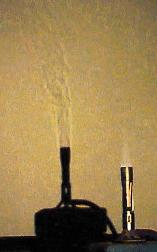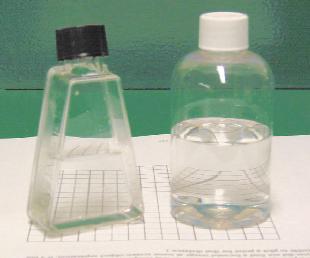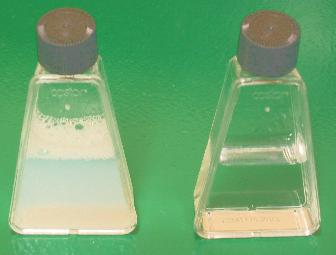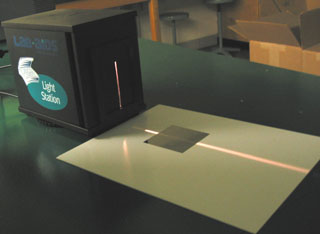

|
| Hot air casts a shadow |
|---|
Light travels in a straight line in a uniform transparent medium such as air.
When light encounters a different medium, however, several things happen:
*Some of the light is reflected. A white object reflects light of all
wavelengths (or colors). A colored object reflects some
wavelengths better than others. A mirror reflects a light beam so that it
remains a beam (mirror reflection), in contrast to a piece of paper, which
reflects it in many directions (diffuse reflection).
*Some of the light may be absorbed. If all of the light is absorbed
or reflected, no light passes through and the medium is opaque.
*Some of the light enters the new medium, and may eventually emerge elsewhere.
An incident beam of light can change direction at the surface (refraction).
If the light remains a beam, the medium is transparent; but it may be scattered
so that the light comes out many different places, and then the
medium is translucent.
These categories are not exclusive, and most materials do a little of all of them at once. For example, adding a little milk to water changes it from transparent to translucent; it scatters some light, while transmitting some, too. This explains how a clear bottle of water can cast a shadow. In fact, even air can cast a shadow, if it varies in density from place to place.
Here are some pictures illustrating some of these cases:
 |
The scene behind the bottles is displaced or distorted because light refracts (changes direction) at the surfaces. |

| Putting a little milk into a bottle of water makes it translucent. The milk scatters light and obscures the view through the bottle, though we can still make out where the bottom ends and the back surface begins |
 |
Here we can see the light beam where it hits the paper, because light is scattered in many directions, including towards our eyes. The mirror looks dark because it is reflecting the light in a different, very specific, direction, which is not towards our eyes. |